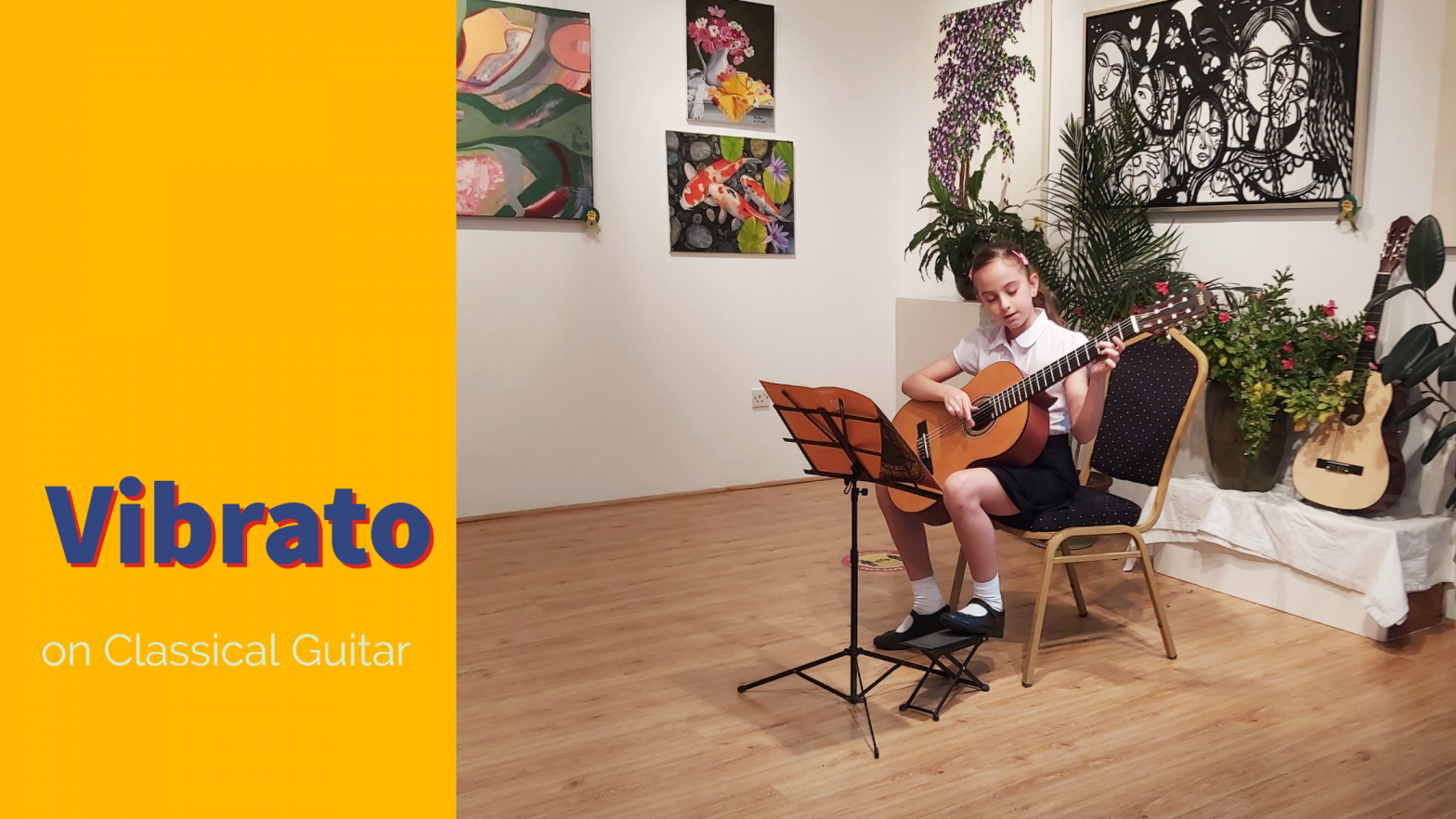Vibrato is an important technique for classical guitarists to master in order to add expressiveness and beauty to their playing. Once we produce a sound on classical guitar, there is not much that we can do before it fades away. Vibrato is the only technique that allows the guitar player to add more color and expressiveness to the produced sound. But not only that this is the only way to apply some control over the sounding note. In this article, you will find some tips and advice on how to produce it.
What is Vibrato?
The word “vibrato” comes from the Latin word “vibrare”, which means “to vibrate”. In music, this is a technique that produces a pulsating effect by changing the pitch of the note slightly.
In general, there are two types of vibrato that you can produce on a classical guitar I will call them simply: horizontal and vertical.
Horizontal (axial) Vibrato
This is the most common type of vibrato and it is produced by moving the fretting finger back and forth while maintaining the pressure on the string. The pitch of the note will rise and fall slightly, producing a pulsating effect.
The Intensity
and the amplitude of the movements left and right is endless. For example, if you do slow and large movements the effect is kind of “Wah – Wah”. Fast and short moves will result in a more intense vibrato with a small change in the pitch. the combinations of those -slow, fast, large, and small movements are many. The movement comes from the elbow there is a point in the middle of the forearm that is not moving.
Vertical (radial) Vibrato
This type of vibrato is produced by moving the fretting finger up or down together with the string across the fretboard. This type of vibrato can even alter the pitch of the note by a semitone. The use of vertical vibrato results in a more obvious change in pitch, depending on the amplitude. after all, the movements are done only by the finger itself, just by flexing and releasing it, the speed of the vibrato is limited.
Bending
In fact, the radial vibrato is bending the string.
When to use Vibrato in classical guitar?
The most important thing to consider when using vibrato on a classical guitar is the effect that you want to achieve. It adds expressiveness and beauty to the sound. It is important to use vibrato tastefully and not overdo it. A good rule of thumb is to use it only on long sustained notes. There is no specific rule that says to do it here or there. Instead, use your musical knowledge and taste. That is not something that comes easy, but with time as you develop as a guitarist, you will feel the change.
How to Produce a Beautiful Vibrato Sound on Your Classical Guitar
Here are some tips and advice::
1. Use a light touch. Make sure your left-hand thumb is not stuck to the neck of the guitar. Instead, it should touch it gently.
2. Transfer some amount of pressure from the thumb and the finger to the biceps and the finger roughly 70% biceps and 30% thumb.
3. Use the right amount of pressure
4. Use smooth, even movement. Sudden, jerky movements will produce an unpleasant sound.
5. Listen to as much classical guitar music as you can. However, the best way to get an idea of what vibrato does is to listen to classical guitar music. Try to listen deeply and critically. In particular, how the guitar player produces sounds, and how and when they do the vibrato. I can’t stress enough how important is to listen.
As with any other technique, the most important thing is to practice, and then practice some more. Try different speeds, intensities, and amplitudes. Listen to how the sound changes. Experiment and have fun!
Remember, it is a technique that should be used tastefully and not overused. A little bit of it can go a long way in adding expressiveness and beauty to your playing. With a little practice, you will be able to include this technique in your classical guitar playing.
Contact us for a free guitar lesson!
Good Luck!
